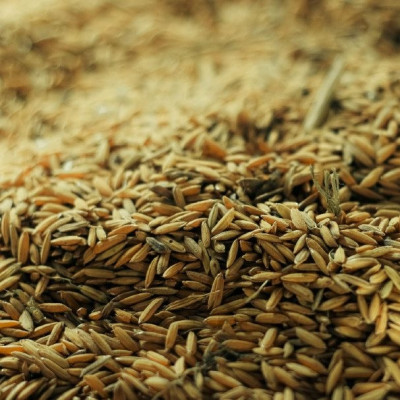
2022-07-05
Visited : 1676
The world’s first quantum dot LEDs made from recycled rice husks are shining a light on developing environmentally sustainable LED displays, report researchers in Japan.
Vibrant color displays are everywhere around us, from our TV screens to the display on the device you are currently using to read this piece! These bright colors are created by Light Emitting Diodes (LEDs) – small electrical components with a crystal core acting as a semiconductor. The semiconductor is nanometers in size and can emit light when an electrical current passes through it.
But the process of creating some LEDs, such as quantum dot LEDs (QD LEDs) require the use of heavy metals like lead to produce semiconductors. These heavy metals are not only dangerous to the environment as they can leach and pollute water and soil, the process of extracting these heavy metals from mines is unsustainable. To avoid these problems, researchers in Japan have discovered a method of creating these semiconductors using rice husks.
Published in ACS Sustainable Chemistry and Engineering, Dr Ken-ichi Saitow and his team from Hiroshima University have created the world’s first QD LED using rice husks obtained from the initial stages of processing rice grain.
Heavy metals have always been used to form QD LEDs due to their ability to form nanocrystalline structures that act as both an electrical conductor and insulator under specific conditions. This allows the nanocrystalline structure to do many things, such as letting the current to flow easily in a single direction – producing what is called a diode. This property that enables a QD LED to emit varying colors such as red, green and blue, depending on the amount of electrical current flowing in a direction.
One element that can be used as a substitute for heavy metals is silicon. It too can form similar nanocrystalline structures that can behave like a semiconductor. What adds to silicon’s charm is that it is non-toxic and abundantly found in the environment. Saitow and colleagues knew that rice husks were an abundant source of natural silicon and developed a method of extracting a very high yield of silicon from the rice husks.
First, the researchers milled rice husks into a powder. Then they burned the powder to remove any unwanted organic material, leaving silica ash behind. After that, they heated silica ash in a furnace to turn it into pure silicon powder, and subsequently observed it under an electron microscope to determine if it has formed nanocrystalline structures similar to ones produced by heavy metals.
Saitow and colleagues conducted a series of further chemical processing turning the powder into more stable crystalline structures that are 3nm in size. Then, the team tested the crystals for their photoluminescence – their ability to emit light – when an electrical current flows through. The rice husk-derived nanocrystals were able to produce an orange-red glow, confirming its ability to be a superconductor.
These new superconductors were then assembled into a small LED and tested once again for its photoluminescence. The assembly was a success, and the LED was able to emit its orange-red light from its tiny glass casing.
Moving forward, Saitow would like to further explore the possibility of producing different colors such as blue and green from these rice husk-derived QD LEDs. He also plans on testing out other waste materials from agriculture and food processing such as sugar cane husks.
Ultimately, he plans on further exploring the viability of commercializing this method of producing semiconductors, creating a more environmentally sustainable production process.
Read the original article on Asian Scientist Magazine.